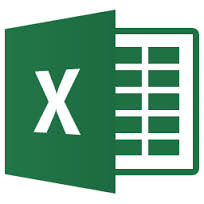Have you heard or read about Business apps yet? Your colleagues have. Apps are a successful initiative of Apple which has been copied many times since. Now there are also Business apps and according to Gartner the deployment of Business apps is an irreversible trend. So it’s time to get into it.
Like many trends in IT Business apps first arose in the United States. A Business app is a complete and Out of the box-solution for an existing problem. Purchase and deploy the app at one instance means that you can be operational within a couple of hours. Often the Business app comes as a SaaS-solution (Software as a service, a cloud application). Apps are implemented for processes for which you want to use a solution, but it is unjustified to hire a consultants and or programmers.
We often see that ‘the Business’ discovers an app and deploys it as a Saas-solution without many problems and without bothering the ICT department. We have seen in het United States and in the Netherlands that a successful solution can grow (very) quickly in an organization.
Being more efficient by using Business apps?
Of course, because expert knowledge is directly available to you, there is not only more efficiency in maintenance of the application, but also in the process itself. The risk of creation and maintainance of the Business app fully lies with the supplier. You may also know that the costs of making software for a Business process, has to be managed as a project and for the execution of it you need a lot of consultants and programmers. These costs are often unmanageable when the Business user raises questions at a later stag, which they always do. Your controller should be able to calculate where the breakeven point for ‘make or buy’ is and he must also research what the pros and cons.
Pros and cons
The advantages of a Business app are obvious. Manageable costs, easy purchase procedure, immediately deployed and instantly operational. The (sometimes difficult) decision procedure of the IT department can be skipped by the Business. Of course the difficulty of the process is only Business’ perception Business, it doesn’t have to be difficult.
Disadvantage of starting to work with Business apps, is that the organizations are not used to them and have to acquire domain knowledge. They also have to check the track record of the makers. After all eventually all software suppliers will be providers of Business apps. Although some of these companies might be new providers, they have earned their stripes in different fields, like finance.
Another disadvantage arises when you use multiple SaaS-applications at the same time and independent from ICT. In that case you will need a lot of passwords and a single sign on might not be possible.
A security problem might arise. In order to eliminate the disadvantages it might be best to take the purchase initiative and deployment of Business apps together with ICT, before your organization loses control.
Conclusion:
The achievable efficiency improvements by deploying one or more Business apps, makes the decision to purchase a no brainer. But handle with care, when Business meets IT the best solution for the organization will be achieved.
Tips:
– Below you will find some examples of Business apps, which might give you some ideas to improve processes within your organization.
– Compare the costs of a SaaS-application with an on premise-alternative for a total period of five years.
Tips:
– Below you will find some examples of business apps, which might give you some ideas to improve processes within your organization.
– Compare the costs of a SaaS-application with an on premise-alternative for a total period of five years.
Examples of business apps
Sponsored by:

(6018)
Deze post is ook beschikbaar in/Also available in: Dutch





